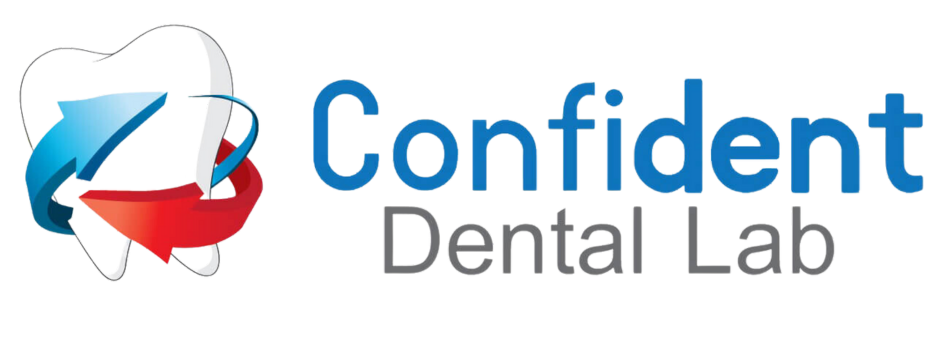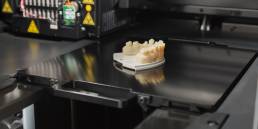360Imaging Anatomic Guide for Rapid Full-Arch Rehabilitation
 1) Introduction
1) Introduction
Full-arch implant rehabilitation has become one of the most transformative treatments in modern dentistry, restoring function and confidence to patients who are edentulous or have failing dentition. While the success of these procedures depends on both surgical precision and prosthetic planning, guided surgery has taken predictability to the next level. The 360Imaging Anatomic Guide™ represents one of the most advanced tools in this field, designed specifically for rapid, accurate, and prosthetically driven full-arch solutions.
2) What Is the 360Imaging Anatomic Guide?
The 360Imaging Anatomic Guide™ is a customized, 3D-printed surgical guide developed through digital planning. Unlike traditional guides, it integrates anatomical, prosthetic, and surgical considerations into a single platform. This ensures that implant placement is not only accurate but also fully aligned with the final restoration. It is part of 360Imaging’s digital ecosystem, which streamlines planning, surgery, and restoration for full-arch cases.
3) Key Features of the 360Imaging Anatomic Guide
- Prosthetic-driven design: Ensures implants are placed in ideal positions to support the planned restoration.
- Anatomical accuracy: Incorporates CBCT data to account for bone volume, nerve positioning, and sinus anatomy.
- Multi-use guide: Supports guided drilling, implant placement, and in some workflows, immediate prosthetic loading.
- Custom-fit stability: Secure seating of the guide ensures accuracy and confidence during surgery.
4) Workflow: From Planning to Delivery
The process begins with a CBCT scan and digital impressions. This data is uploaded into 360Imaging’s planning software, where implant positions are mapped in relation to the prosthetic design. The customized guide is then manufactured and delivered to the surgical team. During surgery, the guide directs the exact angle, depth, and position of implant placement, and in many cases, facilitates same-day prosthetic delivery.
5) Clinical Advantages of the 360Imaging System
- Predictability: High accuracy in implant positioning reduces risks and complications.
- Efficiency: Guided protocols shorten surgical time and support immediate loading.
- Minimized invasiveness: By avoiding unnecessary incisions or grafting, patients often experience faster recovery.
- Confidence for clinicians: Both new and experienced implant surgeons benefit from the added precision.
6) Comparison: 360Imaging vs. Conventional Surgical Guides
Traditional surgical guides often focus only on bone anatomy or tooth position, which can result in compromises when translating the prosthetic plan to the surgical site. The 360Imaging Anatomic Guide goes further by integrating prosthetic, anatomical, and surgical requirements into a unified plan. This means fewer surprises during surgery, better prosthetic outcomes, and improved patient satisfaction compared to conventional guides.
7) The Dental Lab’s Role in the 360Imaging Workflow
Dental laboratories play a critical role in the success of this system. The lab collaborates with the surgical team during the planning phase, providing input on prosthetic design and ensuring restorative-driven implant placement. On the day of surgery, the lab may assist with immediate provisionalization, ensuring the patient leaves with a functional, esthetic restoration. Their involvement continues into the fabrication of the final prosthesis, leveraging digital workflows for precision and consistency.
8) Full-Arch Rehabilitation with the Anatomic Guides
For full-arch cases, the Anatomic Guide™ is particularly valuable. It allows clinicians to place multiple implants with exact spacing, angulation, and depth, all pre-planned according to the final bridge design. This translates to fewer surgical complications, reduced chair time, and the possibility of same-day teeth for patients. For those with complex anatomical challenges, such as limited bone volume or sinus proximity, the guide offers an added layer of safety and predictability.
9) Conclusion
The 360Imaging Anatomic Guide™ is redefining full-arch implant therapy by uniting precision, speed, and prosthetic-driven planning. For clinicians, it delivers a higher level of confidence and efficiency; for patients, it offers faster treatment, fewer complications, and life-changing results. As digital workflows continue to advance, tools like the Anatomic Guide™ will remain at the heart of modern implant dentistry—setting new standards for accuracy and patient care.
Latest News
October 25, 2025
Intraoral Scanning Advances Every Dentist Should Know in 2025: Full-Arch Implant Restoration Insights for Dental Labs
Advances in intraoral scanning, optimized scan protocols, and lab-driven validation provide clinicians and dental labs with powerful tools for excellence in 2025.
October 12, 2025
Occlusal Scheme Design for Full-Arch Restorations: Balancing Function and Esthetics
Labs must often navigate the choice between functional occlusion, which focuses on ideal load distribution, longevity, and minimal stress on components, and esthetic occlusion.
September 26, 2025
Optimizing Full-Arch Implant Restorations: How Lab-Driven Precision Improves Fit, Function, and Patient Satisfaction
Full-arch implant restorations are among the most rewarding yet demanding treatments in dentistry. Precision is critical because even the smallest misfit can compromise occlusion,…
September 16, 2025
Zirconia vs. E.max vs. PFM: How to Choose the Best Crown Material
With options like zirconia, E.max (lithium disilicate), and PFM (porcelain fused to metal), dentists and labs must weigh strength, esthetics, tissue response, workflow, and…

 1) Introduction
1) Introduction

